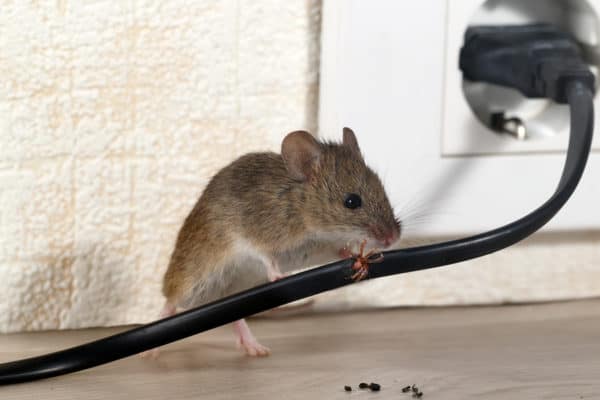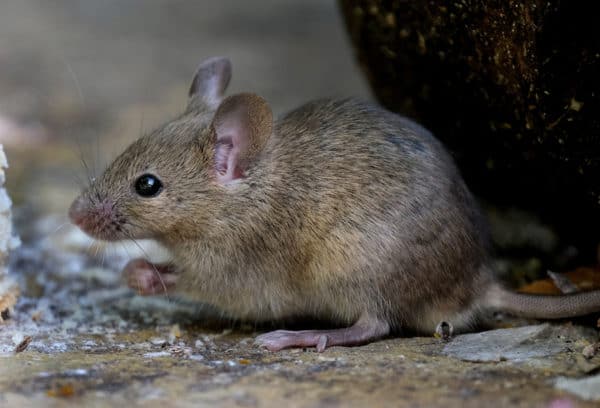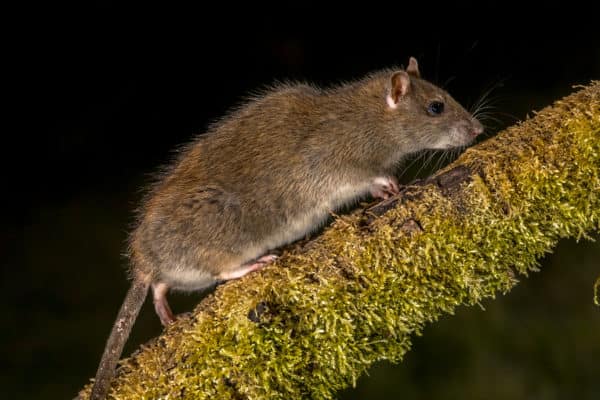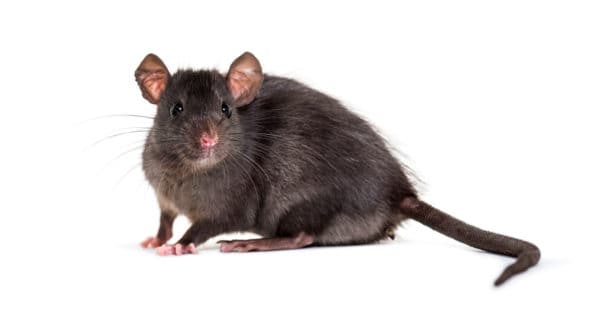READY TO GET STARTED?
REQUEST A FREE ESTIMATE
Fill out the form below or call (888) 466-7849 for a free, no-obligation estimate.

Spring makes its own statement loud and clear; the torrential downpours are soon to be here! With rain on the horizon and “social distancing” in full-force, everyone will be spending more time indoors… even pests! The last thing you want to deal with when you’re already stuck inside your home is an unwanted rodent.
There are three main species of rodent that are prevalent in homes, all of which thrive because of their ability to adapt to human environments. These are the house mouse, the Norway rat (also known as the common rat and the brown rat), and the roof rat (also known as the black rat or the ship rat). At first glance there are some commonalities between all rodent species. They all have a pair of incisor teeth in their upper jaw, short legs, long tails, and they all can cause significant damage to both your home and your health. If you look closer, however, you can see several distinguishing features in mice vs rats to help identify which pest you have.

The house mouse is small in size, only about 4 to 6 inches long. In fact, they are often confused with young rats. They are usually light grey, brown, or white in color with lighter shading on their bellies. Mice have large floppy ears and smaller feet and heads than rats. They have triangular snouts with long whiskers. Their tail is proportionally longer than their head and body length.

Norway rats are the biggest of the three species at about 10 inches long. They have thicker bodies with fur that is usually brown with black shading and shaggy in appearance. They have a paler color underneath their tails. Their tail is shorter than the length of their body and head and is usually hairless and scaly. They have small hairy ears and blunt noses.

The roof rat is usually about 8 inches long with slender bodies. They have gray fur with black shading and smooth coats. They have dark tails that are usually hairless and scaly. Their tail is longer than their head and body, similar to a mouse. They have large, thin, hairless ears and pointed noses.
The house mouse prefers cereal but will eat almost anything. They kibble their grain when eating it, meaning they remove the outer husk and eat the grain that is inside. They tend to seek out food in the same places which makes baiting them easier. They don’t need to drink water but will consume about 3 mL if it is available.
Norway rats also prefer cereals but will eat what is available. They cut their grains when eating, giving them the appearance of being chopped. These rats also tend to seek food in the same places making them easier to bait, as well. They drink about 60 mL of water a day.
Roof rats prefer most fruit but will eat other foods, as well. They also cut their grain when eating it, making it look like it has been chopped. They don’t usually eat in the same location on consecutive nights making them much harder to trap. They drink about 30 mL of water per day.
House mice usually live on the ground and nest in burrows. They are quite agile and great climbers. They have smaller footprints than rats do. The grease from their bodies can combine with dirt and urine and build up pillars, a telltale sign of their presence. They will often build their nests in hidden areas near food sources out of any soft material or shredded paper they can find.
Norway rats live on the ground and in burrows. They are usually spotted throughout buildings and in sewer systems. Their burrowing can cause extensive damage to sewers. They tend to walk on the pads of their feet and leave continuous smudges on their walking paths from their oily fur.
Roof rats are mainly restricted to buildings and structures around ports and on ships in temperate climates. They are quite agile and very good climbers. They tend to nest up high under roofs (hence their name) and in warmer countries will even nest in trees. They tend to walk on their toes and surfaces they travel on will show scattered smudges.
The newborns of every rodent species are born blind, hairless and completely dependent on the mother for feeding and protection.
House mice typically have litters of 4-16 babies. They can have 7 to 8 litters per year. The reach maturity in about 8 to 12 weeks.
Norway rats typically have litters of 7 to 8 babies. They can have 3 to 6 litters per year. They reach maturity in about 10 to 12 weeks.
Roof rats typically have litters of 5 to 10 babies. They can have 3 to 6 litters per year. They reach maturity in about 7 to 8 weeks.
House mice are nocturnal creatures. They are social and territorial and tend to be bolder than rats. They are curious and will explore new things, making them easier to trap. They are skillful climbers and will fit into small holes to access areas of your home you wouldn’t expect. They are weaker than rats and are usually afraid of them as they will kill them. House mice have a musky odor and are color blind.
Norway rats are also nocturnal. They are typically fearful and cautious about new things. They don’t explore like mice do. They can climb but prefer to inhabit the lower levels of structures. They are stronger than mice and have been known to gnaw through building materials. They have poor eyesight. Norway rats don’t get along with roof rats and they will often fight to the death.
Roof rats are nocturnal. They are skilled climbers and prefer higher levels of structures. They have stronger teeth than mice and can gnaw through building materials. They have poor eyesight. they don’t get along with Norway rats and will often fight them to the death.
House mice droppings are approximately 3 to 8 mm in length. They are often found scattered randomly. They are granular in shape and black in color. They can be found near their nesting areas.
Norway rat droppings are dark brown in color. They are tapered, spindle shaped droppings that resemble large grains of rice.
Roof rat droppings are long and thin and smaller in size than those of the Norway rat. They are more regular in form with a banana-like curve and pointed ends.
Whether you have mice or rats, rodent feces can cause significant health risks for you and your family. Some common diseases caused by rodent droppings include Hantavirus, bubonic plague, salmonellosis, rat bite fever, and leptospirosis. Rodents are also known chewers and can cause damage to the structure of your home and put you at risk for fires by chewing through wires and cables.
If you suspect you have a rodent problem, contact a licensed pest control company who can help identify whether you have a mouse or a rat, apply safe rodent removal techniques, and make sure you have a comprehensive rodent control and prevention plan going forward.
4 Ways To Keep Snakes Out of Your Yard
Getting Ready for Spring Lawn Care
What You Should Know About Termites This Spring
Categories